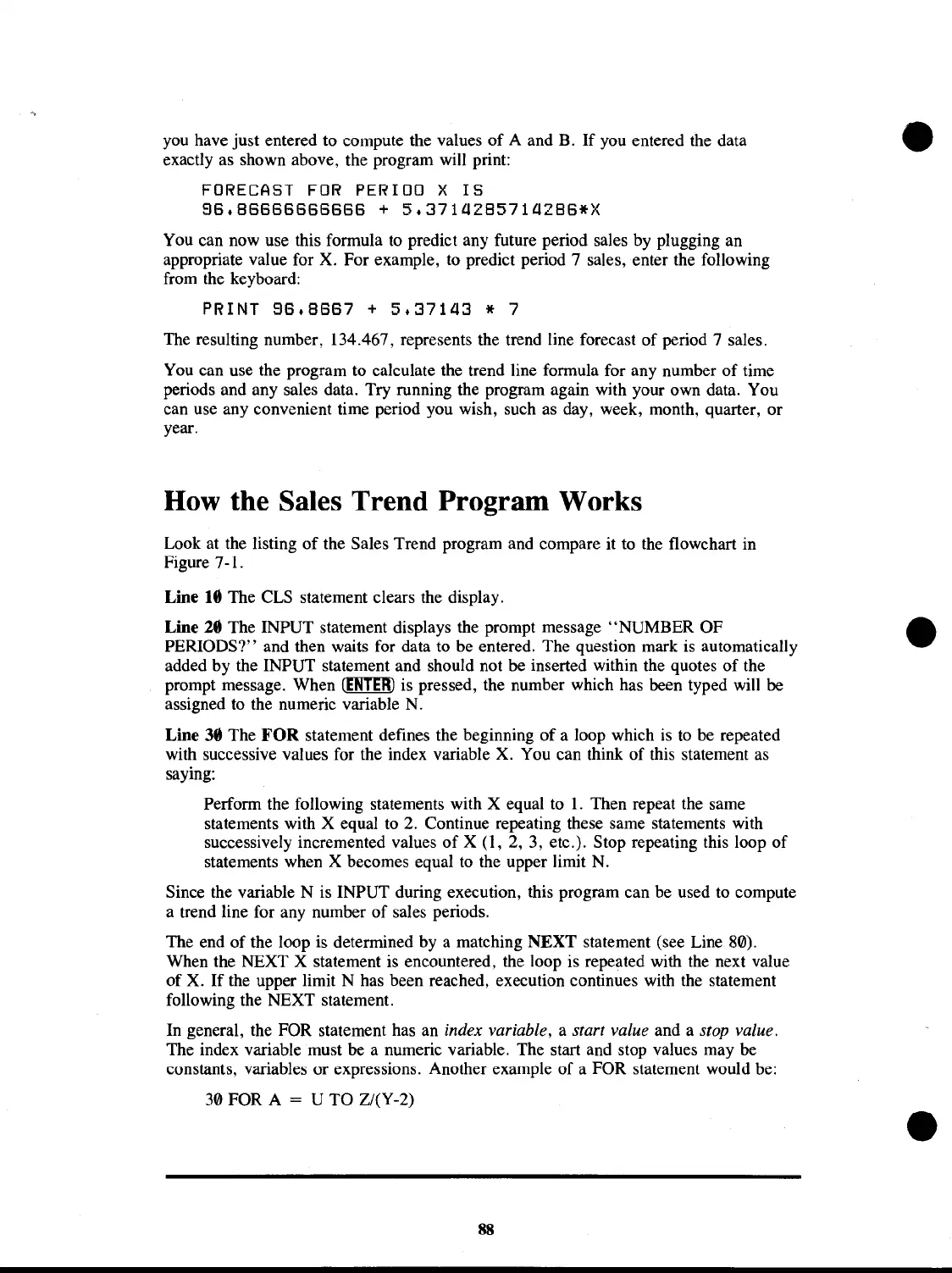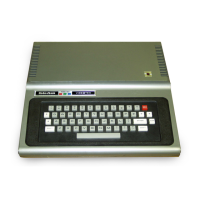you have just entered to compute the values
of
A and B.
If
you entered the data
exactly as shown above, the program will print:
FORECAST
FOR
PERIOD X
IS
86.86666666666
+
5.371QZ8571QZ86*X
You can now use this formula
to
predict any future period sales by plugging an
appropriate value for X. For example, to predict period 7 sales, enter the following
from the keyboard:
PRINT
86.8667
+
5.371Q3
* 7
The resulting number, 134.467, represents the trend line forecast
of
period 7 sales.
You can use the program to calculate the trend line formula for any number
of
time
periods and any sales data. Try running the program again with your own data. You
can use any convenient time period you wish, such as day, week, month, quarter, or
year.
How the Sales
Trend
Program
Works
Look at the listing
of
the Sales Trend program and compare it to the flowchart in
Figure 7-1.
Line
18 The CLS statement clears the display.
Line
28 The INPUT statement displays the prompt message "NUMBER OF
PERIODS?" and then waits for data to be entered. The question mark is automatically
added by the INPUT statement and should not be inserted within the quotes
of
the
prompt message. When
mEID is pressed, the number which has been typed will be
assigned
to
the numeric variable N.
Line
38 The
FOR
statement defines the beginning
of
a loop which
is
to
be repeated
with successive values for the index variable X. You can think
of
this statement as
saying:
Perform the following statements with X equal to I. Then repeat the same
statements with X equal to 2. Continue repeating these same statements with
successively incremented values
of
X
(l,
2, 3, etc.). Stop repeating this loop
of
statements when X becomes equal
to
the upper limit N.
Since the variable N is INPUT during execution, this program can be used to compute
a trend line for any number
of
sales periods.
The end
of
the loop is determined by a matching NEXT statement (see Line 80).
When the NEXT X statement is encountered, the loop is repeated with the next value
of
X.
If
the upper limit N has been reached, execution continues with the statement
following the NEXT statement.
In general, the FOR statement has an
index variable, a start value and a stop value.
The index variable must be a numeric variable. The start and stop values may be
constants, variables
or
expressions. Another example
of
a FOR statement would be:
30 FOR A = U TO
ZJ(Y
-2)
88

